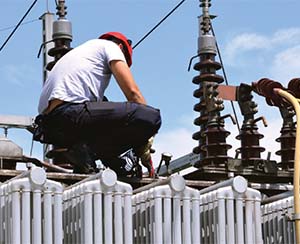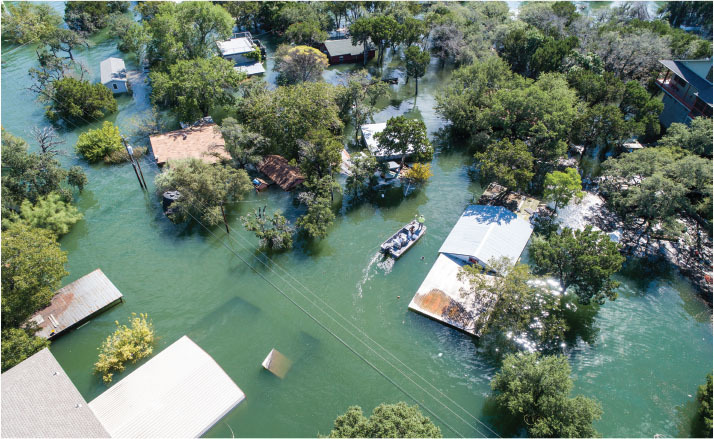March/April 2020
Concepts
Time to End PE Exemption for Electrical Utility Work
BY WILLIAM H. MAXWELL, P.E.
 Since the gas pipeline explosion in Massachusetts in 2018 that took the life of one person, injured 25, and caused extensive property damage, there has been much discussion about repealing state laws that exempt gas utility work from PE requirements. As an electrical engineer who has worked in utilities for many years, I believe similar exemptions for the power side of the house should be rescinded too. It may not be as obvious, but the danger of power transmission and distribution can be as great as the danger of natural gas. The time has come to require the PE seal and signature on electrical utility work as well.
Since the gas pipeline explosion in Massachusetts in 2018 that took the life of one person, injured 25, and caused extensive property damage, there has been much discussion about repealing state laws that exempt gas utility work from PE requirements. As an electrical engineer who has worked in utilities for many years, I believe similar exemptions for the power side of the house should be rescinded too. It may not be as obvious, but the danger of power transmission and distribution can be as great as the danger of natural gas. The time has come to require the PE seal and signature on electrical utility work as well.
Let me start by saying that many talented and responsible engineers work for utilities. In fact, to be a utility engineer is considered by many to mean you’ve made it to the top. It’s truly a position of prestige. My goal in writing this is not to suggest that utilities follow a prescriptive course of rules and codes. Most do, indeed, follow the IEEE National Electrical Safety Code. And over the last century, each utility has developed its own standards, and design criteria. Nothing here is to say these self-imposed rules are right or wrong. They are simply how companies bring power and energy to their customers day in and day out. In most instances, the tariffs in a company’s franchise area require them to deliver these services consistently and with safety in mind for the public and their employees.
Over the last few years, we have all watched or read of some fairly horrific natural gas accidents. After the gas explosion in Massachusetts’ Merrimack Valley, the public, legislators, and regulators were rightfully up in arms. How can this happen? Who is responsible? Are we ever going to be safe again in our homes?
We know from the federal investigation that during a typical replacement of gas piping, a regulator was not properly transferred. And the system, as designed, registered zero pressure in the line and tried to compensate with a 75-psi high-pressure main. The new piping that was installed could not handle these pressures because it wasn’t engineered to do so.
So, who was responsible for this loss of life and property? The utility certainly had general and financial liability. But who’s watching the store? Who’s checking the design? Who’s assuring the construction phasing is correct? Who has the ethical responsibility to protect the public with their education and experience? That’s right—a professional engineer. While engineering is a job, professional engineering is a choice and vocation. We literally have people’s lives in our hands, and must always keep the public safe, to the best of our abilities.
To read the news, natural gas seems to be the most dangerous utility that the public could encounter. But electricity may be even more dangerous. If a design error isn’t caught and repaired during commissioning, stress from a natural event can lead to disaster. Often, the environment is blamed. The California wildfires are an imperfect example. It is common for tree branches to fall on overhead lines and possibly cause the fault conditions that lead to forest fires. With this, I suggest that ethically motivated engineering could prevent these tragedies, be they gas or electricity, with thoughtful and creative engineering design.
 So, let’s look at some numbers. A Scientific American article stated that the electrical grid is made up of 200,000 miles of transmission lines and 5.5 million miles of distribution lines. In contrast, there are 320,000 miles of natural gas gathering and transmission lines and 2.2 million miles of distribution and service lines, according to the American Gas Association. That means there are about 2.25 times more miles of electric lines than gas lines.
So, let’s look at some numbers. A Scientific American article stated that the electrical grid is made up of 200,000 miles of transmission lines and 5.5 million miles of distribution lines. In contrast, there are 320,000 miles of natural gas gathering and transmission lines and 2.2 million miles of distribution and service lines, according to the American Gas Association. That means there are about 2.25 times more miles of electric lines than gas lines.
Certainly, pipelines are dangerous. From 2017–2019, there were an average of 9 fatalities and 52 injuries per year from pipeline incidents, according to the Pipeline and Hazardous Materials Safety Administration. In contrast, however, the Electrical Safety Foundation International reports that from 2015–2017 there were an average of 141 fatal electrical injuries in the workplace and 2,110 injuries. Although these numbers are not a direct apples-to-apples comparison, they do give perspective.
Gas explosions receive substantial media coverage, but electricity causes more harm. To me, the requirement is clear. Every design that is constructed and put into service shall be sealed and signed by a professional engineer. This shall be true if it’s the companies’ engineers or their consulting engineering firm. As an engineer, you don’t come much closer to the public than by designing distribution systems for electricity.
NSPE member William H. Maxwell, P.E., is the electrical facilities engineer at Upstate Medical University in Syracuse, New York. He previously worked as a senior engineer in the Substation Engineering Department at National Grid in Syracuse.


 Volunteering at NSPE is a great opportunity to grow your professional network and connect with other leaders in the field.
Volunteering at NSPE is a great opportunity to grow your professional network and connect with other leaders in the field. The National Society of Professional Engineers (NSPE) encourages you to explore the resources to cast your vote on election day:
The National Society of Professional Engineers (NSPE) encourages you to explore the resources to cast your vote on election day:



